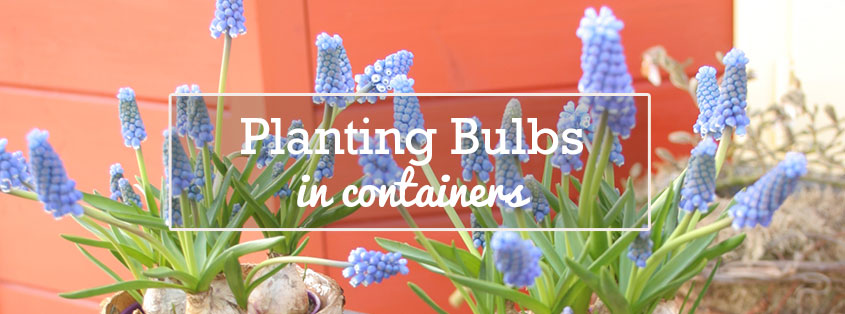FREE SHIPPING ON $45+! Code: TWHPTMH

Container Gardening - Flower Bulbs Planted in Pots
Planting bulb in pots or containers
Container gardening is convenient for the gardeners that have limited space. If you don't have space for a lush flower garden or if your outdoor space doesn't provide the necessary elements to produce the flower garden you have always wanted, why not consider the possibility planting in containers or pots. 'Container Gardening'. Large flowerpots, hanging baskets, and planter boxes are just some of the containers that can be used. A patio, deck, balcony, or doorstep can provide enough space for a productive, attractive display.
1. Select the right container
Be creative in selecting containers. And it is important to select a container that is large enough to provide room for roots and soil, it should also have sufficient headroom for proper watering, provide bottom drainage, and be attractive without competing with the plant it holds.
Avoid containers with narrow openings. Drainage holes are the secret to success by making sure the plant never stands in wet soil. Roots require air space in the soil to live. If the desired container does not have drainage holes, consider growing the plant in another container, perhaps a plastic pot, and displaying it in the more attractive container. Unglazed clay containers may be more natural or appeal to those who want a certain look, plastic containers offer an advantage if they are to be placed in full sun.
2. Select the right flowers and plants
Trees, shrubs, flowers & flower bulbs can do well in containers. The important thing to remember is that growing a plant in a container does not change its basic light or moisture requirements. Fall planting bulbs will not survive the same in containers as they do in the ground. They can more easily freeze, since they are less insulated. If you are in zones 3-6, you can only plant fall bulbs in containers if you are forcing them. (please see Flowerbulbcrazy.com) Sun-loving plants still need to be in full sun.
Growing plants together that have the same light and moisture requirements adds interest and beauty to the container garden. Avoid mixing slow-growing and vigorous plants. Avoid selecting a plant that is too small for the container as the roots will not become established well, and the plant will never be vigorous.
3. Soil Selection
Though you can simply take some soil from you garden and put it in your container, a better choice would be buying prepared soil less mix for containers because it is free of weeds and has added nutrients to help plants grow. Choose a potting soil that is porous for root aeration and drainage.
4. Planting and maintenance
Apply enough water to run through the drainage holes in the bottom of the container. Since the volume of the soil is small, you will find that your container will dry out quickly. This is especially likely if you have your container on the patio in the full sun. However you do not want to over water your flowers this will lead to root damage caused by no oxygen getting to the soil.
Many bulbs make lovely container flowers. Pots full of bulbs are ideal for balconies and patios, next to your door or even indoor. The secret is to plant your bulbs in layers inside the container. This layering method is also called 'sandwich-system'. Choose the species which will flower a few weeks after each other and you will get a pot that continues to flower for almost two months.
Take care to select a pot that is sufficiently wide and deep. 10 inches high is a nice size. Isolate the pots with bubbly plastic on the inside and place crocks or gravel on the bottom to evacuate the water. Then apply a layer of soil. The first layer of bulbs consists of the tallest and latest flowering type. Then some more soil, enough to totally cover the first layer. The second layer of bulbs has to be of an intermediary size and grow when the first layer has died back. If your container is deep enough, at least 14 inches, you can place a third layer. Really big pots can hold even a fourth layer. Keep in mind that the last layer should be covered with sufficient soil, as much as if planted in the garden.
In choosing bulbs for layered pots you should be aware that bulbs which grow a lot of foliage, are less suitable as their companions might not get enough light. In addition, one should choose strong species, which can stand a bit of wind, especially for pots destined for balconies and roof patios. After flowering, bulbs in pots should be cared for with water, light and small quantities of fertiliser, till their leaves have died off completely. After that their resting period starts, till the next season. Pots, in which bulbs and perennials are combined, can really grow into small gardens.